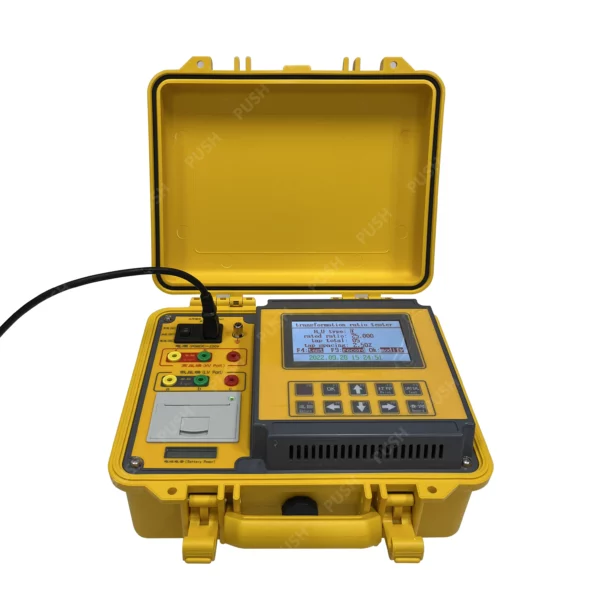The use of a transformer turn ratio tester can significantly improve the reliability of applications that rely on transformers. Here are the key ways in which a transformer turn ratio tester contributes to enhancing application reliability:
Transformer Performance Evaluation:
A turn ratio tester accurately measures the turns ratio of a transformer, which is a critical parameter for its performance. By comparing the measured turns ratio with the specified or expected value, the tester helps determine if the transformer is operating within acceptable limits. This evaluation ensures that the transformer is functioning correctly and delivering the intended voltage transformation, which is crucial for the reliable operation of the application.
Detection of Faulty Windings:
Transformer windings can develop faults over time due to factors such as insulation degradation, mechanical stress, or manufacturing defects. A turn ratio tester can identify faulty windings by detecting inconsistencies in the turns ratio. If the measured turns ratio deviates significantly from the expected value, it indicates a potential fault in one or more windings. Detecting these faults early through regular testing helps prevent catastrophic failures and ensures the reliable performance of the transformer and the application.
Quality Assurance in Manufacturing:
Turn ratio testing plays a vital role in quality assurance during the manufacturing process of transformers. By testing the turns ratio of each manufactured unit, manufacturers can identify any deviations from the specified design parameters or manufacturing tolerances. This process ensures that only transformers meeting the required performance criteria are delivered to customers, minimizing the risk of failure and improving the overall reliability of the application.

Preventive Maintenance:
Regular turn ratio testing forms an integral part of preventive maintenance programs for transformers. By periodically testing the transformer turns ratio, maintenance personnel can detect any changes or drifts in the ratio over time. Deviations from the expected value can indicate potential issues with the transformer, such as winding degradation or insulation problems. Timely maintenance or replacement can then be scheduled to prevent unexpected failures and maximize the reliability of the transformer and the application it serves.
Troubleshooting and Diagnostics:
In situations where transformer performance issues or failures occur, a turn ratio tester can be used for troubleshooting and diagnostics. By comparing the measured turns ratio with the expected value, the tester helps identify the specific transformer winding or connection that may be causing the problem. This targeted approach enables efficient and accurate diagnosis, leading to effective repairs and restoration of the transformer’s reliable operation within the application.
Compliance with Standards:
Turn ratio testing is often required to comply with industry standards and regulations. Standards such as IEEE C57.12.90 and IEC 60076 define the acceptable turns ratio ranges for transformers. By using a turn ratio tester, organizations can ensure compliance with these standards, providing assurance that their transformers meet the necessary performance and reliability requirements.